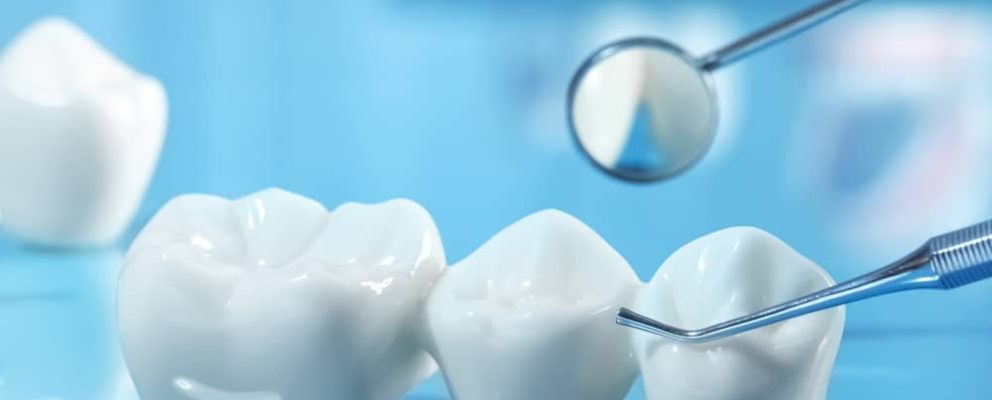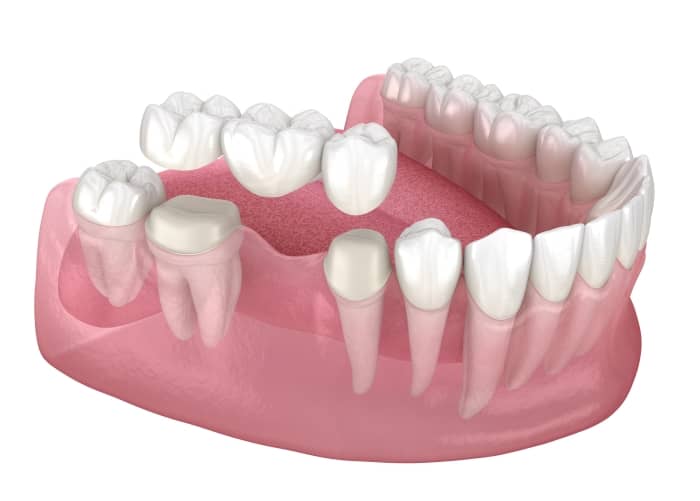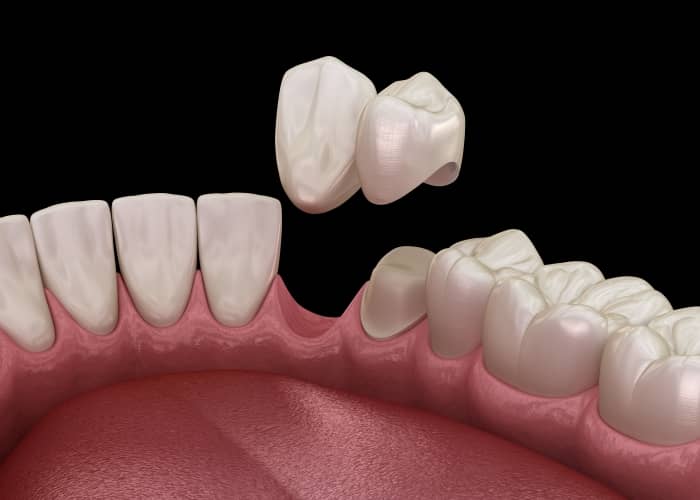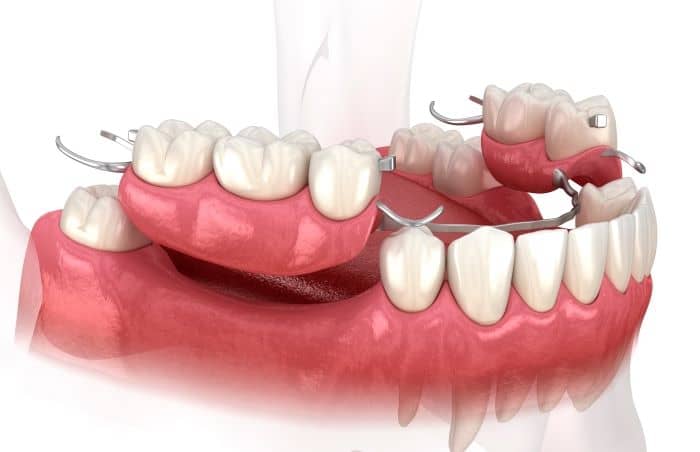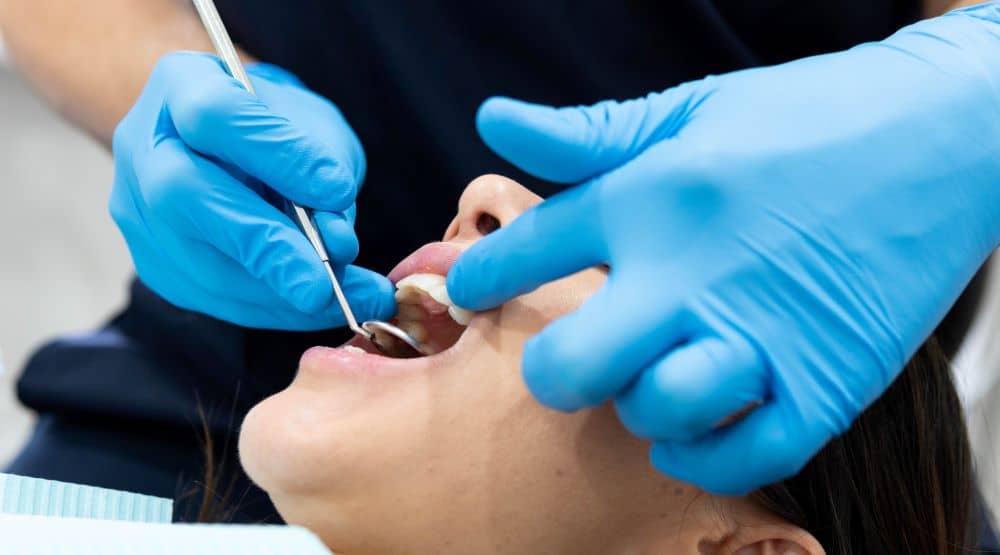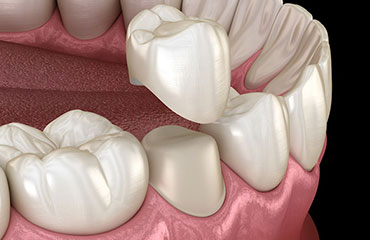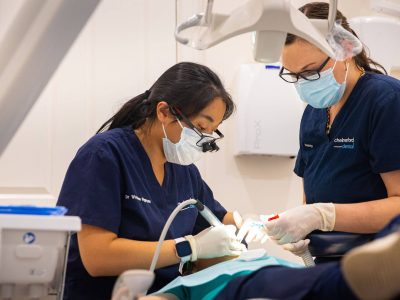Missing a tooth or several teeth? At Chelmsford Dental, we offer several effective options for replacing a missing tooth, including dental bridges.
Dental bridges are a straightforward, effective solution to replace missing teeth and improve the look and function of your smile. In this article, we’ll cover everything you need to know about dental bridges to help you decide if this treatment option may be right for you.
What Is A Dental Bridge?
A dental bridge is a fixed prosthetic device that replaces a missing tooth or teeth. The dental bridge is fused to a metal base and provides a natural-looking, secure, and durable solution to missing teeth. The result looks and functions like natural teeth.
When Is a Dental Bridge Needed?
You may be a good candidate for a dental bridge if you have healthy teeth on either side of the gap left behind by a missing tooth or teeth.
You may opt for a dental bridge if:
- You recently lost a tooth or teeth due to decay, a medical condition, or trauma to your mouth
- You want a smile that looks and feels healthy and natural
- You want to still enjoy your favourite foods
- You want to be able to speak clearly
- You want an effective way to replace a missing tooth
- You want to prevent jaw bone loss after losing a tooth
- You have a dental bridge that needs to be replaced
- You lack the amount of bone necessary to place a dental implant
- You have medical conditions that make dental implant surgery risky
- You are not ready to undergo dental implant surgery
What Are the Benefits of Dental Bridges?
The benefits of dental bridges include:
- Less invasive than dental implants
- The process can be completed relatively quickly (as soon as two to three weeks) and in as little as two to three appointments
- When a tooth is removed, a temporary bridge can be placed on the same day
- Look, feel, and function like natural teeth
- Can be reshaped to improve the appearance of teeth
- Protect the bite by filling the gap left behind by a missing tooth (left alone, the gap may allow decay to set in or cause changes to your bite)
- Help prevent jaw bone deterioration due to a missing tooth
What Are the Types of Dental Bridges?
There are four main types of dental bridges:
1. Traditional Fixed Bridges
Traditional fixed bridges are a common bridge type, typically made from porcelain or ceramic material fused to metal. A traditional dental bridge is an excellent option when you have two healthy teeth on each side of the gap. These adjacent teeth are often referred to as abutment teeth or anchoring teeth.
The healthy teeth surrounding the gap left by a missing tooth or teeth are reshaped and fitted with crowns. These crowns then provide support for the dental bridge between them.
2. Cantilever Bridges
A cantilever bridge is a common option if there is a single tooth missing near the front of the mouth.
Cantilever bridges are similar to traditional dental bridges, except cantilever bridges only use an abutment tooth on one side of the gap. This makes cantilever bridges a versatile option for replacing a missing tooth. However, cantilever bridges are rarely used in the back of the mouth as they cannot handle the high bite force of the back teeth.
3. Maryland Bonded Bridges (Resin-Bonded Bridges)
A Maryland Bonded Bridge, also known as a resin-bonded bridge, is also similar to a traditional bridge. Maryland bonded bridges involve a floating tooth that serves to replace a missing tooth.
Instead of completely covering the surrounding teeth, a Maryland Bonded Bridge is attached to existing teeth by a metal framework. As opposed to traditional bridges, Maryland dental bridges do not require crowns. This means adjacent teeth need minimal to no reshaping. The durability and strength of a Maryland dental bridge will depend on the framework and materials used.
4. Removable Bridges or Partial Dentures
Although most dental bridges are permanently fixed, a removable dental bridge is a better option for certain individuals. Removable dental bridges — also known as partial dentures — feature a plastic, gum-coloured base that gets secured to surrounding teeth with metal clasps.
Removable dental bridges are less expensive than crowns or dental implants but do not offer the same durability as fixed dental bridges. Your dentist will advise you if partial dentures are an ideal treatment option for you.
What Is the Dental Bridge Procedure Like?
At the initial consultation, your dentist will determine if you are a good candidate for a dental bridge. Your dentist will assess the health of your teeth and gums, take any necessary x-rays, and discuss the best dental bridge type for you.
After the initial consultation, the process of getting a dental bridge typically takes two appointments. Treatment time will vary based on the health of your teeth and the type of dental bridge you choose.
Here is a look at what it is like to get a dental bridge:
First Appointment — Your dentist will use a 3-D digital scan to make an exact model of your teeth. This model will be sent to a local lab where a technician will create a customised bridge according to the exact shape and contours of your mouth, gums, and teeth. A temporary bridge will be placed as you wait for the permanent bridge to be created.
Second Appointment — At the second appointment, your dentist will prepare and reshape the teeth adjacent to the gap. This process is typically performed under local anaesthesia and should not be painful.
The temporary dental bridge will be replaced with the permanent dental bridge. This is done by attaching the permanent dental bridge in place by cementing it to the abutment teeth.
Follow-Up Appointment — A third appointment will serve as a follow-up exam to ensure the dental bridge is functioning properly and fitting comfortably. If you are experiencing any discomfort, adjustments will be made to get a proper fit. Your dentist will also discuss how to care for your dental bridge and answer any of your questions.
FAQs About Dental Bridges
- How Long Will a Dental Bridge Last?
With proper maintenance, dental bridges can last for many years. The typical lifespan of a dental bridge is between 5 to 15 years. How long a dental bridge lasts depends on various factors, including the material used, how well the dental bridge is cared for, how strong the supporting teeth are, previous dental treatments, how many teeth are being replaced, and how much force the bridge will be under. Regular dental checkups and a good oral hygiene routine are key to helping your dental bridge last as long as possible.
- How Do I Care for a Dental Bridge?
Dental bridges require a good oral hygiene routine, just like natural teeth. Here are tips for taking care of a dental bridge to help it last as long as possible:
-
-
-
- Use a soft-bristled toothbrush to brush for at least two minutes twice a day
- Floss at least once a day, taking extra care when flossing around a bridge
- Avoid chewing on hard items such as ice, hard candies, and nuts, or sticky foods such as taffy or chewing gum
- See your dentist for regular checkups, at least once every 6 months
-
-
- What Is a Dental Bridge Made Of?
Bridges are typically made of ceramic or porcelain. Ceramic bridges offer an excellent mix of stability, aesthetics, and strength. Ceramic bridges are often supported by an added layer of durable material.
Bridges may also be made of fibre-reinforced resin, although this is less common and does not offer as much strength as ceramic bridges.
The bridge material used depends on the size of the gap, the location in the mouth, how heavy the bite force will be, and the condition of the surrounding teeth.
- What Is the Difference Between a Crown and a Bridge?
A crown is a cap placed over a damaged tooth to improve its appearance, restore function, and prevent further damage.
A bridge uses existing teeth to help fill in the gap left behind by a missing tooth. A bridge is anchored in the gap between the two adjacent teeth using a prosthetic tooth.
Chelmsford Dental offers both of these safe, effective procedures. Call today to book a consultation with one of our dentists to see if you are a good candidate for a crown or bridge.
- Is There an Alternative to Dental Bridges?
Some individuals may opt to have dental implants as an alternative to dental bridges. The benefits of dental implants include:
-
-
-
- The potential to last a lifetime
- A reduced burden on the teeth surrounding the gap
- The promotion of gum health
- Stimulation of the jaw bone to reduce deterioration
-
-
Dentures are another common solution for missing teeth. Your dentist will advise whether dental bridges, dentures, or a dental implant are the right treatment option for you.
For an in-depth look at the various solutions for missing teeth, read our post on The Types and Benefits of Missing Teeth Options.
- How Many Teeth Can Be on a Bridge?
Dental bridges are typically used to replace one or two teeth. However, bridges can have up to four teeth if the surrounding teeth are healthy.
- Am I A Good Candidate for a Dental Bridge?
Dental bridges are an excellent way to replace a tooth or missing teeth and restore your smile. If you would like to learn more and find out if you are a good candidate for a dental bridge, please contact us. Our friendly team is here to answer any of your questions or to help set up a consultation. You can also use our convenient online scheduling tool to book an appointment.
